Does this story sound familiar? A contact has advanced through the sales and marketing funnel. Everything’s looking good and you’re certain this deal is in the bag. Then out of the blue, the contact disappears. They’re no longer downloading your offers or opening your emails.

Similarly, you might have a few dreaded one-time sale customers who never look at your content or products again. Suddenly, they’ve become harder to get in touch with than the Queen of England herself.
These, my fellow marketers, are unengaged, uninterested contacts. Whatever the reason is for them to become unengaged, you need to address it and win back their hearts (or preferably their custom).
Create a re-engagement campaign.
If you’re struggling from either dilemma, you need to create a re-engagement campaign. Write out your strategy one bullet point at a time.
-
How will you attempt to re-engage your contacts?
-
How often will you try before you have to cut the cord and let them go?
-
How will you actually identify an unengaged contact?
Don’t worry, we’ll run through the necessary steps to bring your unengaged contacts back to life with the use of HubSpot, our inbound sales and marketing platform.
Identify unengaged contacts.
Firstly, you need to identify your unengaged contacts. HubSpot actually has a checkbox option to not send emails to contacts with low engagement (this is called greymail suppression), so HubSpot creates this list of unengaged contacts for you.
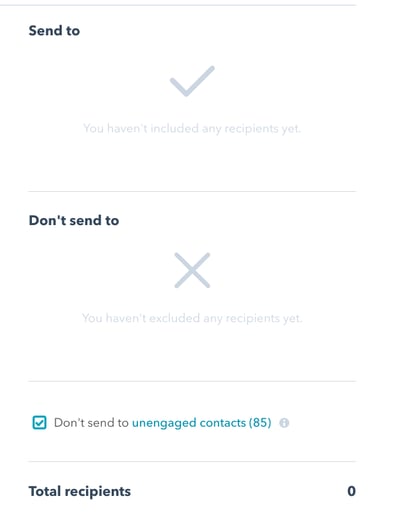
This is based on HubSpot’s own criteria which applies to contacts who've never opened an email from you and haven’t opened or clicked any of the past 11 emails you sent. It also applies to those who’ve previously opened a marketing email but haven’t opened the last 16 emails you’ve sent.
However, you can alter the criteria to fit your definition of ‘unengaged’ if you want. Do this by manually creating a smartlist inside HubSpot.
Take a look at the contact’s profile in HubSpot as well. See if it’s just emails they aren’t engaging with. When was the last time they filled in a form? Have they browsed one of your website pages? If they’re not engaging with email but are still active on your site, it could mean the emails you send to them are either:
-
Too frequent.
-
Not relevant to them.
-
They might be happy to be subscribed but not interested in opening emails currently.
-
Or possibly not even reaching them. Review the bounce rate of the emails you send (the bounce rate benchmark we follow is anything below 5%, by the way. Anything over 5% can get your account shut off by some email service providers).
To find a contact's profile, head to Contacts > Contacts > Click on the contact's name.
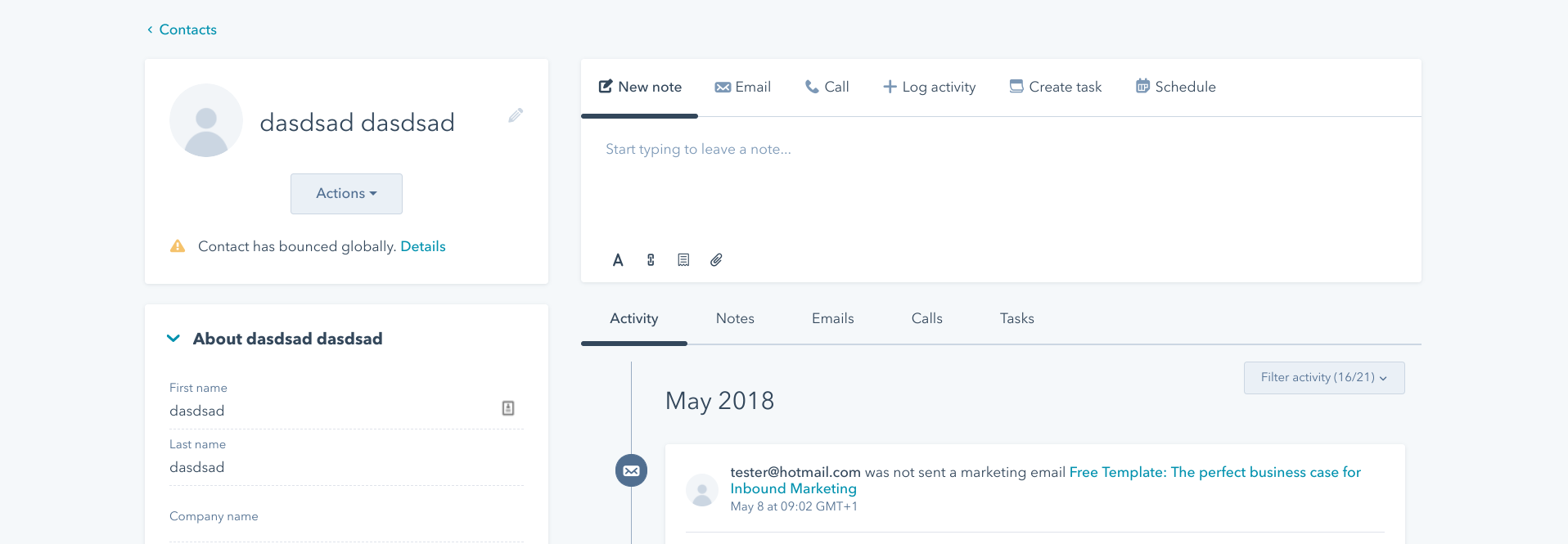
Determine what you class as ‘unengaged’ and you’re ready to move onto the next step of the re-engagement strategy.
Start segmenting contacts.
Keep track of your unengaged contacts by building smart engagement lists based on how a contact has interacted with your marketing or website. In doing so, you can target your marketing to your most engaged contacts. You can then attempt to re-engage the least engaged ones or eventually suppress them and eventually cut the cord.
You can do this by going to Contacts > Lists.
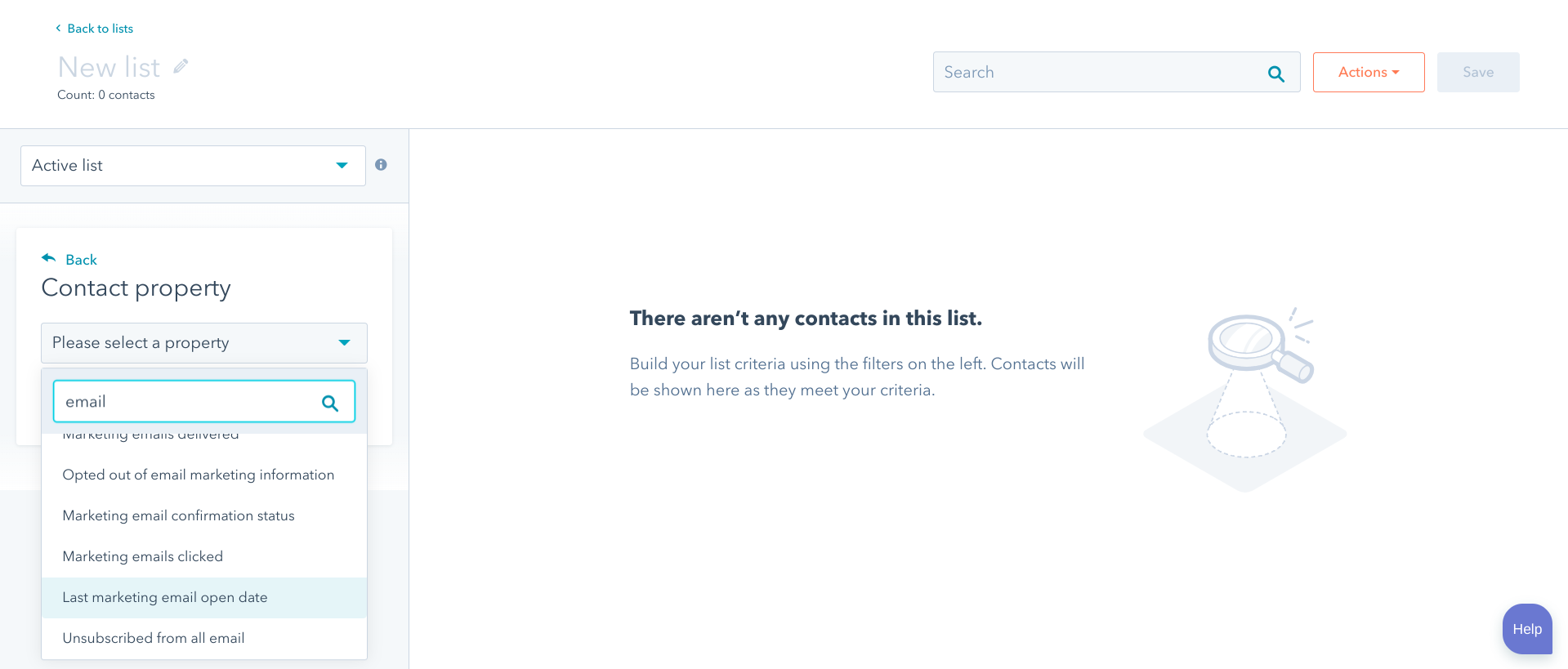
We recommend creating the following engagement list themes:
1. Email engagement.
Consider creating lists based on:
-
Open rate.
-
Bounce rate.
-
Delivered and clicked by a contact.
-
The first and last dates a contact took an email action.
-
Specific emails that contacts have engaged with.
2. Website engagement.
Consider creating lists based on:
-
A contact’s date of first and last visit.
-
Number of page views.
-
Referral source.
-
Any specific pages a contact has viewed.
3. Blog engagement.
Consider creating lists based on:
-
Subscribers and their preferences.
-
Date of first and last visit.
-
Referral source.
-
Blog views.
-
Any specific blog posts a contact has viewed.
The contact properties above should already be built into HubSpot, so all you need to do is select the property.
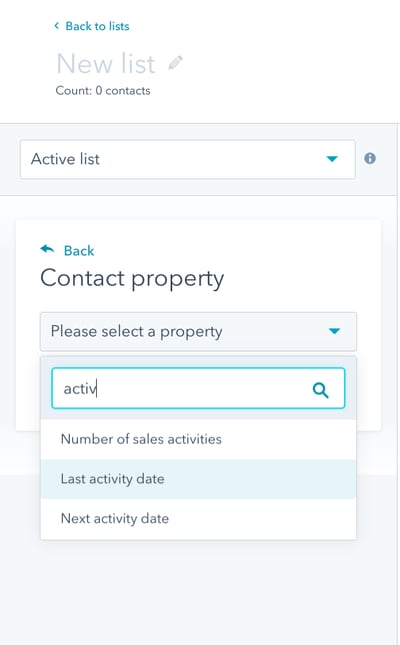
Tweak your email strategy.
Now that you’ve determined who your unengaged contacts are and have segmented them into smart lists, it’s time to try and re-engage them. You do this with the power of email.
Here are a few ideas of re-engagement emails you could send:
Update email preferences.
Offer to change the frequency of emails you send to your contacts or even change the theme your recipient receives. This will help your contacts who are struggling with an overloaded inbox and irrelevant content.
Incentive emails.
Offer coupon codes or freebies to your unengaged contacts. Make sure the offers are relevant to your contacts, though. If they’re not, then this re-engagement email will fall flat on its face.
Ask for feedback.
A lot of the time, contacts might still want to be on a contact list, but their engagement might be low because you’re not supplying the right content. A different approach would be to ask them what you’re doing wrong or what’s missing from your communications.
Get emotional.
This could be a good way to get a contact to start engaging with your brand again. A little ‘I miss you’ can go a long way.
Give a deadline.
Alternatively, give your un-engaged contacts some tough love and offer a deadline. This deadline could be for a freebie, coupon or even asking recipients to opt into your email marketing by a certain date... or you'll ’have to let them go’.
This is another great tactic - the break-up email. If a subject line states, ‘this is the end of our relationship’ doesn’t get them to open your email, nothing will. Inside the email itself, give them a CTA to click if they’re still interested in being subscribed and offer them a link to their subscription settings page too. Anyone who opens it but doesn't click the CTA deserves a second chance.
Anyone who doesn’t even open the email is dead to you and can be deleted from your database.
Re-engagement workflows.
Consider creating re-engagement workflows instead of sending the above as standalone emails to your recipients.
These automated workflows help nurture a lead into becoming active again, as opposed to flinging out an email fishing hook and hoping for a bite. Instead, these workflows give recipients personalised ‘next step’ emails, creating urgency and giving more value.
Head to Automation > Workflows.
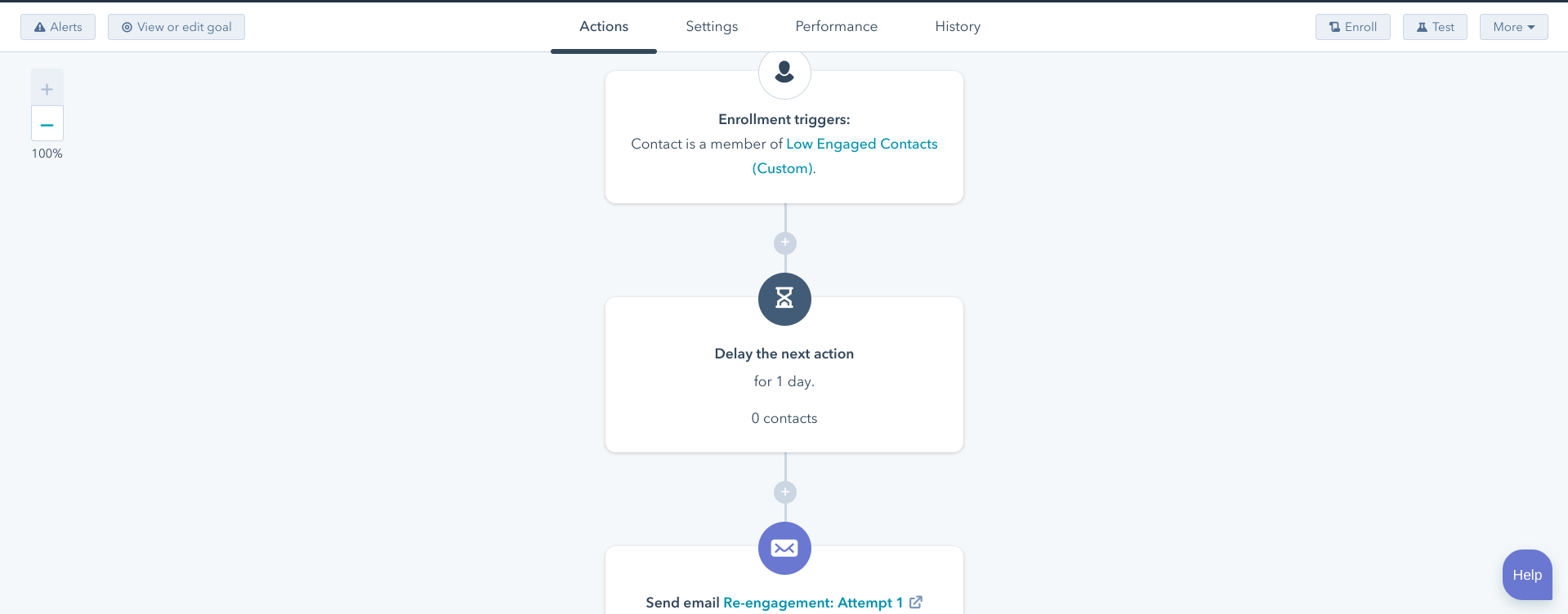
Don’t forget about time delays. You could tarnish your hard work if you spam them too often!
Dispose of the dead.
For whatever reason, contacts will sometimes remain inactive after re-engagement campaigns. Don’t be afraid to delete these email addresses. It’ll save you a lot of time, money and hassle if you do. These dead leads add clutter to your contact database and are simply pointless being there. They also harm your sender score.
Make sure you make re-engagement campaigns a regular thing in your marketing. We advise at least once a year to achieve a neat and healthy database with an abundance of opportunity.
Looking to further your inbound marketing knowledge?
By downloading our Inbound 2.0 guide, you’ll be exposed to the next level of inbound marketing. We’re talking new info on buyer personas, changes to the Flywheel of inbound marketing, key statistics and even going beyond HubSpot.
Click that link below to get your copy.
Originally written by Paige Denton, 02/05/18.
Updated by Jack Cribb, 25/02/2019.
Real Growth. Real Impact.
'Should I use HubSpot?' 32 fundamental reasons why you should
Interviewing an AI version of HubSpot's founder was weird
Avidly named HubSpot EMEA and APAC Partner of the Year
Transforming content strategies: Avidly earns HubSpot Content Experience Accreditation
JD Sherman shares HubSpot's key growth factors and the future of AI | Avidly Talks: Marketing | Ep 124
Breeze: Everything you need to know about HubSpot's powerful AI
INBOUND 24 learnings and updates
See why enterprises chooseAvidly
Let’s build your HubSpot success story
Compelling final call to action - with accompanying link to Contact page







